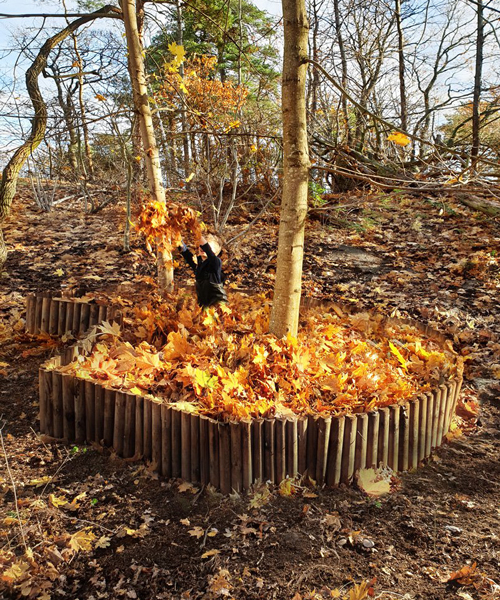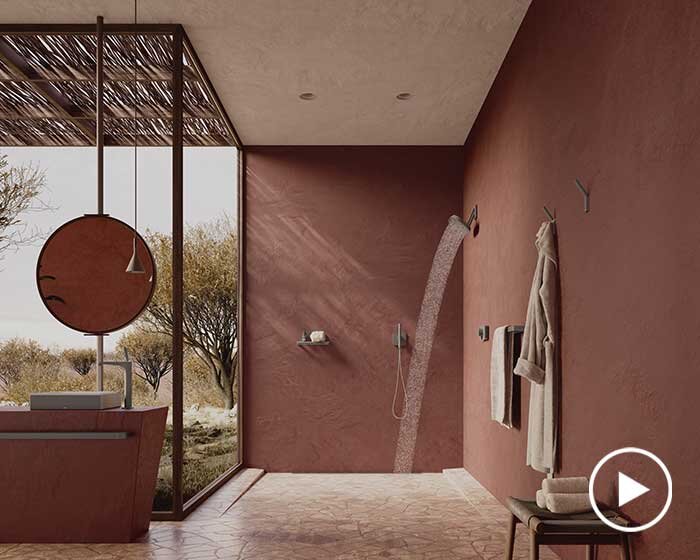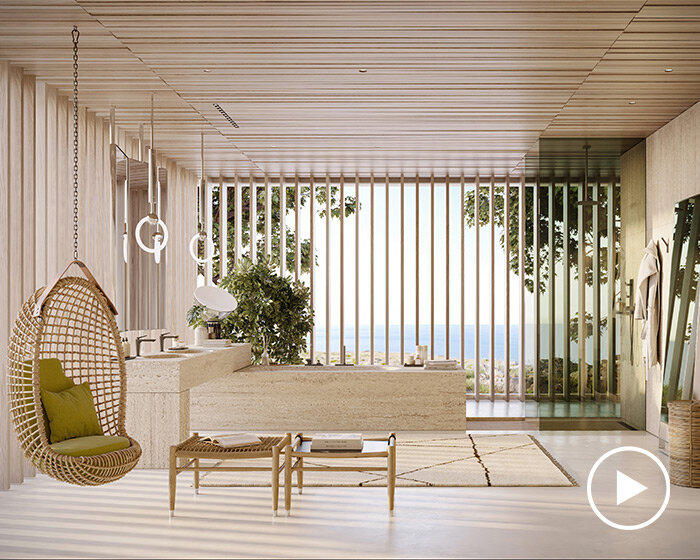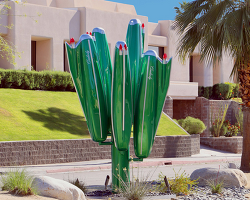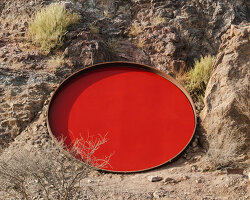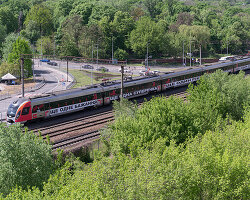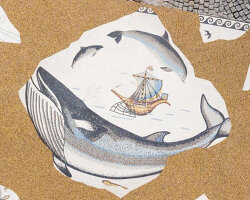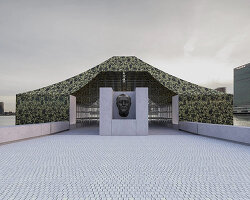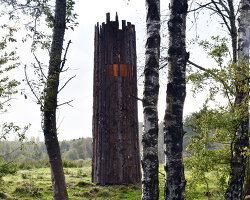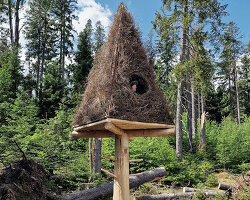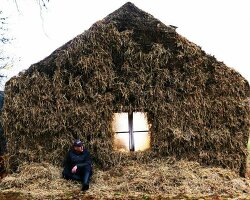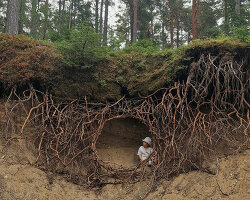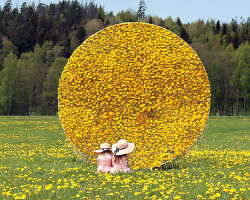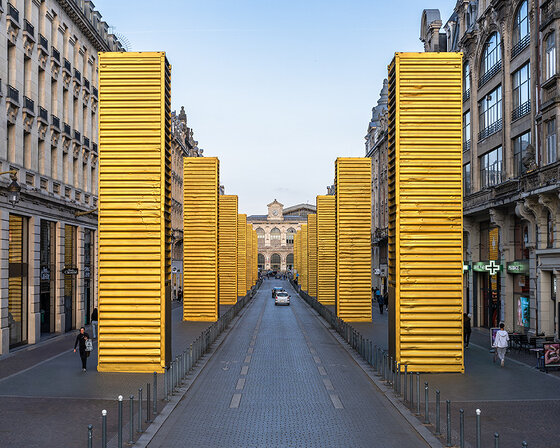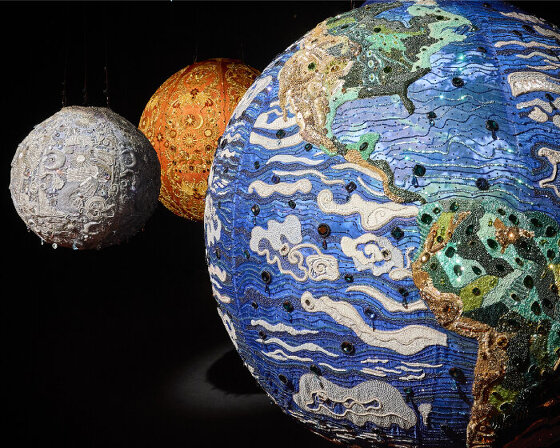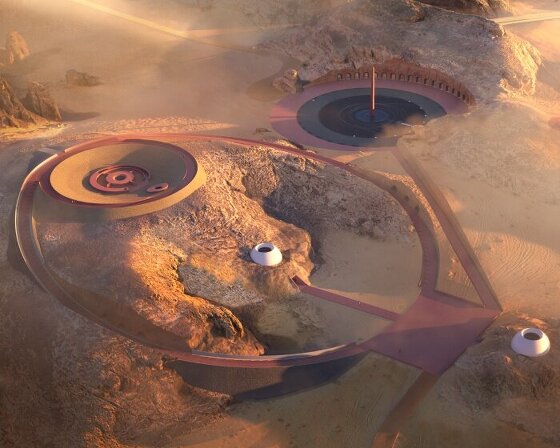in stockholm, sweden, ulf mejergren architects (UMA) has captured the colors of fall with a series of temporary ‘leaf pools’. to celebrate the season, they have created a number of enclosures where fallen leaves can be collected, allowing the public to enjoy this transient gift from nature.
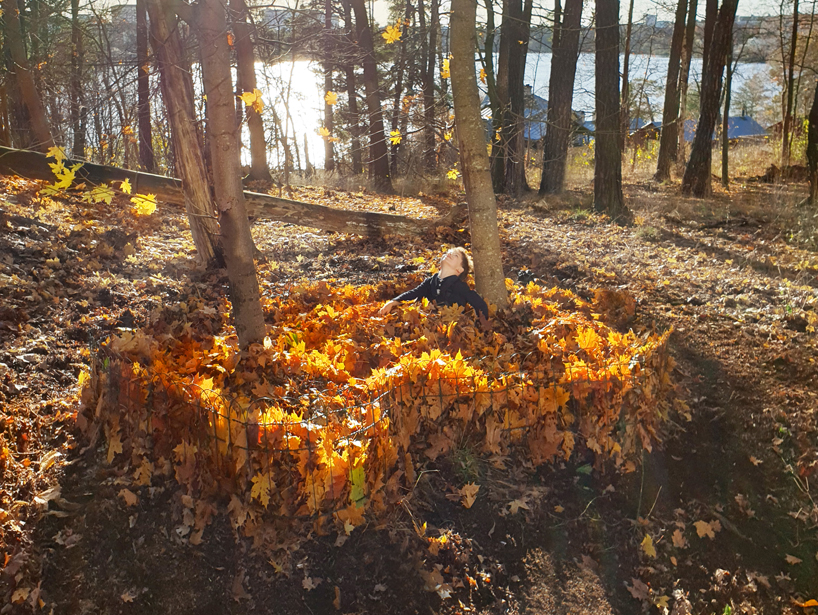
images and diagram courtesy of ulf mejergren architects (UMA)
the small structures were built by UMA using either timber battens or metal mesh. the wooden enclosure gives a sturdy feeling to the pool, making it possible to also sit on the edge. on the other hand, the metal mesh exposes the leaves more and can be installed much quicker. by collecting the leaves in one place, the top layers stay intact for a longer period of time, unlike their leaf cousins that lie directly on the ground.
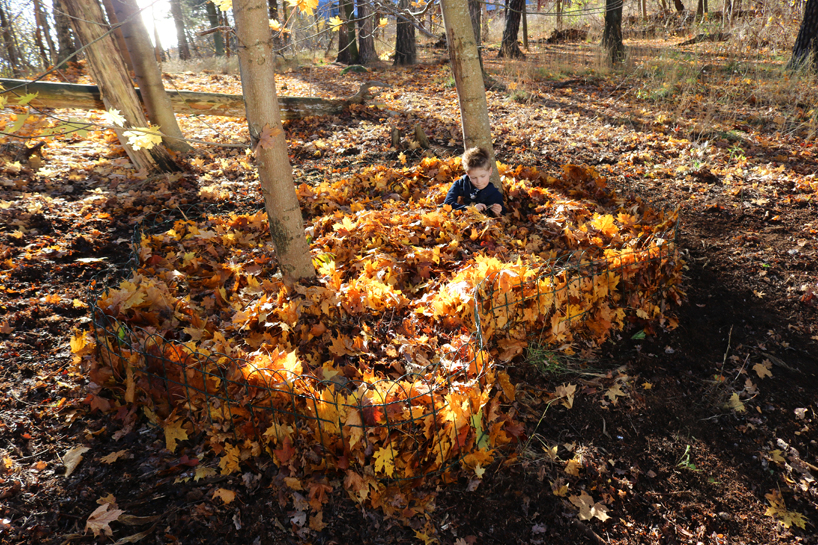
the simple yet poetic project marks the beautiful spectacle of fall colors that are witnessed in many parts of the world. however, UMA brings our attention to the fact that the leaves turning yellow and red in the fall is not actually about changing color. in fact, the leaves already have the yellow, violet and red hues in them during the summer too. however, we don’t see this as the green steals the whole show.
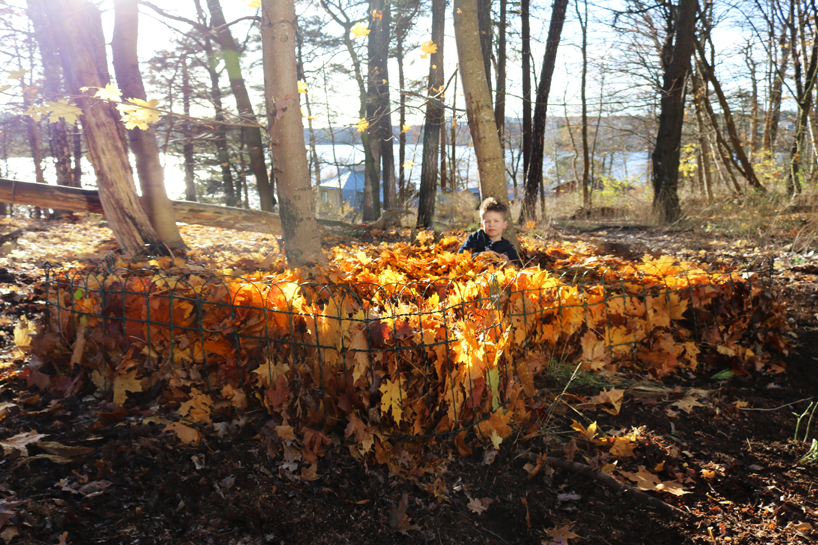
during spring and summer, chlorophyll is produced in the leaves of plants, transforming carbon dioxide and water to carbohydrates such as sugars and starch. this chemical substance has a very effective ability to absorb light from the sun; in particular red and violet. the light that chlorophyll mainly reflects is green and that is the light we see. therefore, the leaves appear green. in the fall, when the light decreases and the temperature drops, the production of chlorophyll ceases and the chlorophyll stored in the plants is broken down. this is when the other beautiful orange, yellow and red shades can be seen.
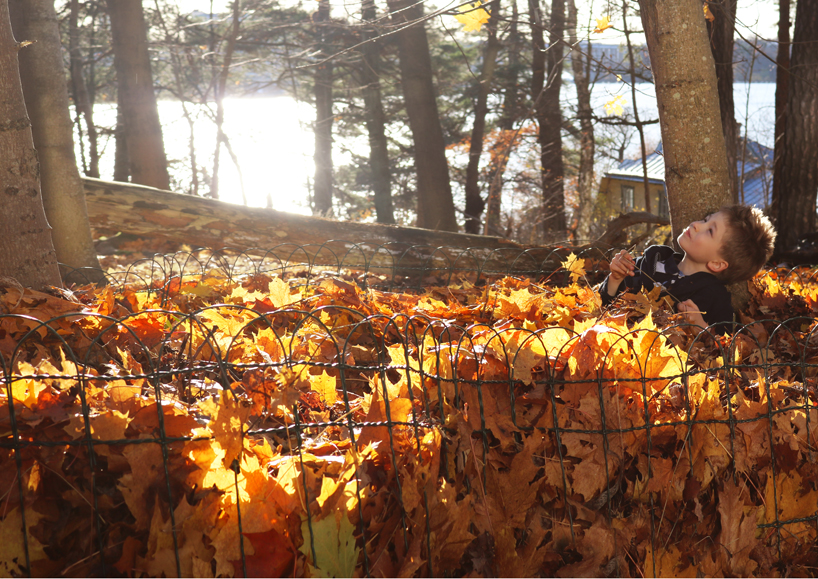
temperature, light, and water supply have an influence on the degree and the duration of fall color. for example, low temperatures above freezing will favor anthocyanin formation that produces bright reds in maples. as the fall colors appear, other changes are taking place. at the point where the stem of the leaf is attached to the tree, a special layer of cells develops and gradually severs the tissues that support the leaf, which is finally blown off by the wind or falls from its own weight. then it’s time for the 200,000 leaves of each deciduous tree to drop and spread out on the ground.
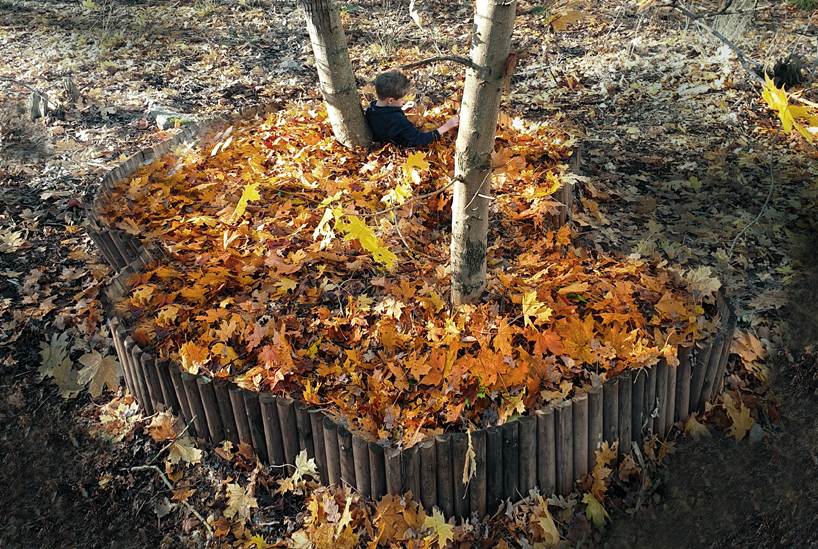
the leaf pools were created for all ages to enjoy. built for the city of stockholm for just two weeks, UMA is already planning to make a bigger structure next year.
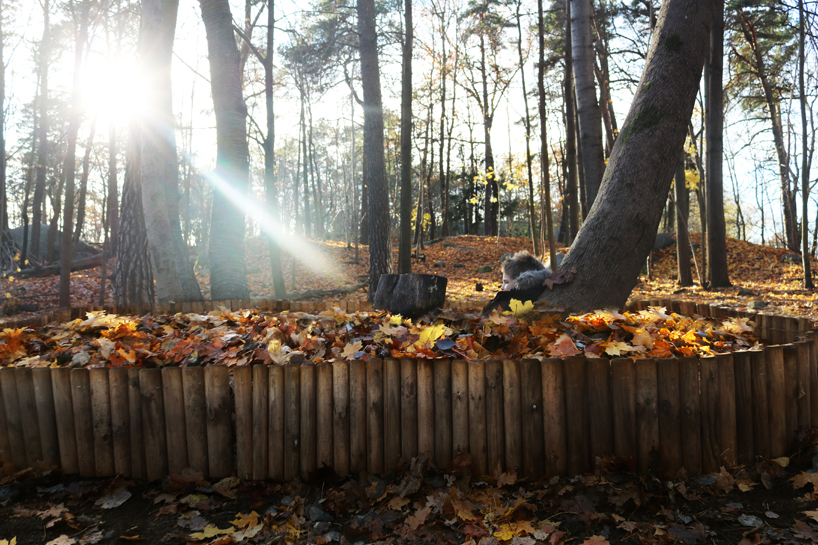
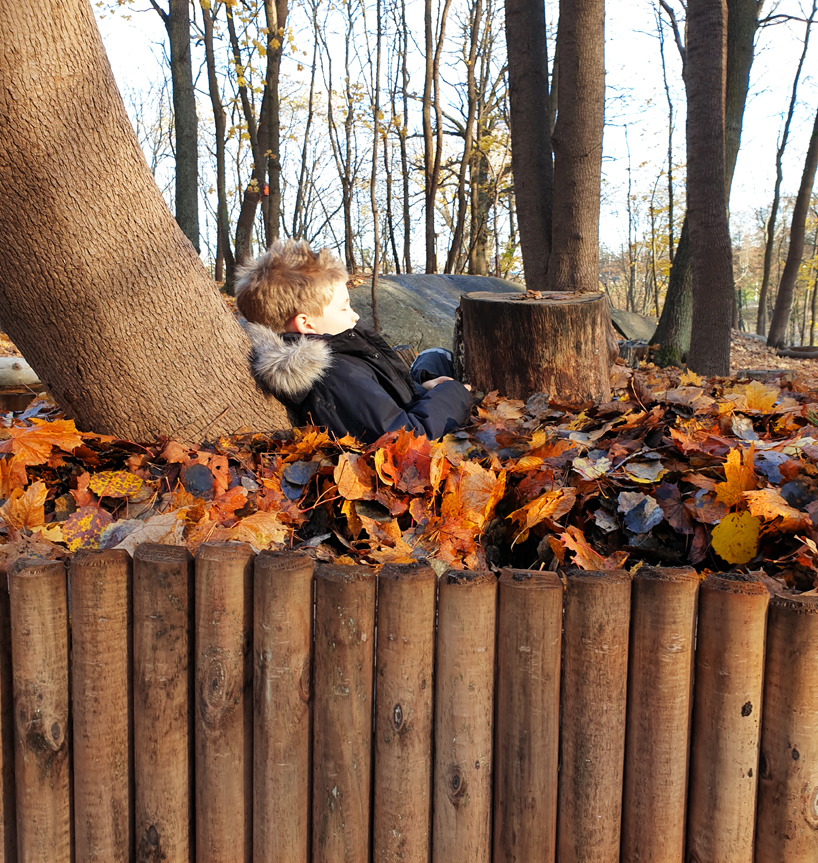
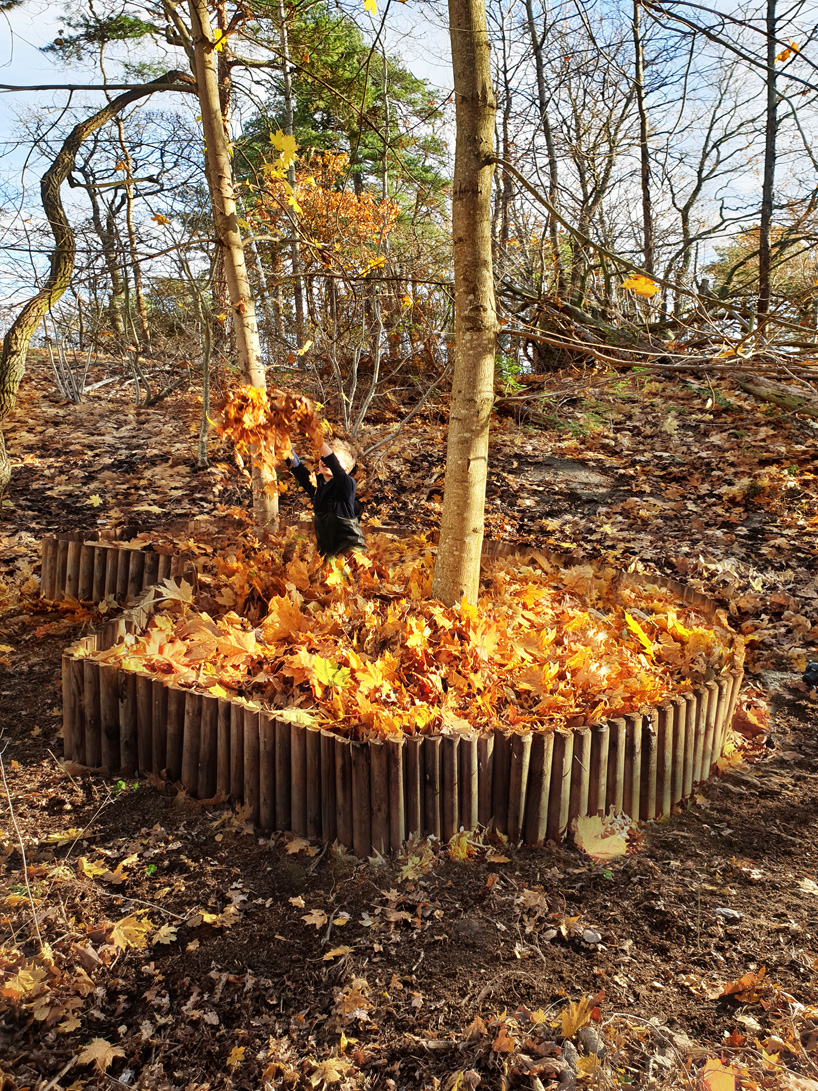
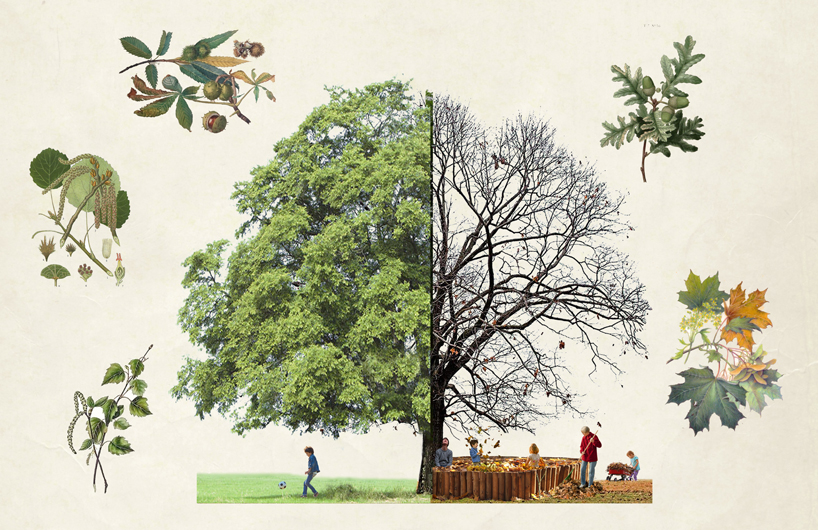
project info:
name: leaf pools
location: stockholm, sweden
architect: ulf mejergren architects (UMA)
designboom has received this project from our ‘DIY submissions‘ feature, where we welcome our readers to submit their work for publication. see more project submissions from our readers here.
edited by: lynne myers | designboom
